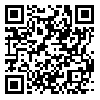BibTeX | RIS | EndNote | Medlars | ProCite | Reference Manager | RefWorks
Send citation to:
URL: http://yjdr.ssu.ac.ir/article-1-154-en.html
Introduction: To investigate the relationship between radiolucent periapical lesions and bone mineral density in post-menopausal women that was referred to the Yazd Khatam-Al-Anbiya clinic in 2014.
Methods:In this Cross-sectional study was conducted. Fifty postmenopausal women with a mean age of 57.9±5.00 years and the average age of menopause is 49.6±2.49 years, the average of bone density of
-2.4±0.8 were used for this study. Bone mineral density was measured using dual-energy X-ray absorptiometry in three groups: healthy bone, osteopenic and osteoporotic. Periapicalradiolucencies were diagnosed on the basis of examination of digital panoramic radiographs and data collected by the software SPSS 17 and statistical test ANOVA and chi-squared tests, and t-test, and Fisher Exact test analysis.
Results:The results showed a not significant relationship between bone mineral density and the ratio of the radiolucent periapical lesions to the total number of teeth (P-value=0.131). Also the relationship between the number of periapical radiolucent lesions with menopause age (P-value=0.428) and duration of menopause
(P-value= 0.362) and bone mineral density with menopause age (P-value=0.916) was not significant. But the relationship between bone mineral density and duration of menopause was significant (P-value = 0.004).
Conclusions:The result of this study, cannot use the number of apical radiolucent lesions in panoramic radiography, as bone density index.
Received: 2016/10/15 | Accepted: 2016/10/15 | Published: 2016/10/15
| Rights and permissions | |
 |
This work is licensed under a Creative Commons Attribution-NonCommercial 4.0 International License. |





